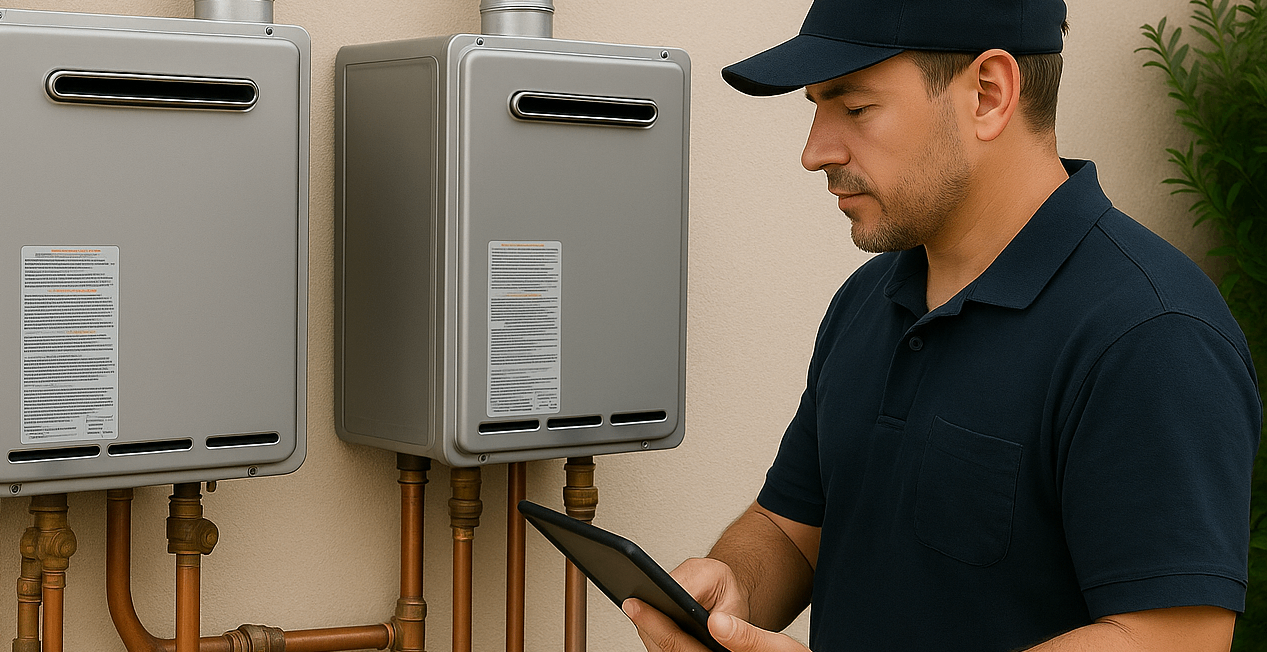Installing a new heating system is a major investment in your home’s comfort and energy efficiency. When done correctly, it provides consistent warmth, lowers utility bills, and improves indoor air quality. However, many homeowners and even some installers make critical mistakes during the installation process that can lead to performance issues, costly repairs, or premature system failure.
Understanding the most common heating installation mistakes can help you avoid them and ensure your system performs reliably for years to come. Below are the top errors to watch out for—and how to prevent them.
1. ❌ Choosing the Wrong Size Heating System
One of the most common and costly mistakes is installing a heating unit that’s either too large or too small for the space it needs to heat. An oversized system will short-cycle (turn on and off frequently), wasting energy and wearing down components faster. An undersized system, on the other hand, will struggle to keep up with demand, running continuously and still failing to maintain comfort.
Proper sizing requires a professional Manual J load calculation, which considers square footage, insulation, windows, ceiling height, and climate zone. Avoid relying on guesswork or matching the size of your old system without analysis—your home’s heating needs may have changed.
2. 🔧 Poor Ductwork Design or Installation
Even the best furnace or heat pump won’t work efficiently if it’s paired with poorly designed ductwork. Inadequate duct sizing, excessive bends, long runs, or leaky joints can significantly reduce airflow and system performance. The result is uneven temperatures, noisy operation, and energy loss.
A proper heating installation includes evaluating the existing ductwork and upgrading or resizing it as necessary. Sealing all joints and ensuring proper insulation in attics or crawlspaces is also crucial. Don’t overlook the importance of airflow design—it directly affects comfort and efficiency.
3. ⚠️ Skipping a Professional Load Calculation
Many homeowners assume that a heating contractor can estimate their needs based on experience or by using rough square footage. But skipping a professional heat load calculation can lead to system mismatch, especially in custom homes or properties with energy upgrades.
A Manual J calculation determines the exact heating requirement based on various building factors. Skipping this step may result in a unit that can’t handle peak demand, leading to discomfort and high energy use. A professional installation always starts with accurate data, not assumptions.
4. 🧯 Ignoring Ventilation and Air Quality Needs
Heating systems don’t just warm the air—they also affect ventilation and indoor air quality. Failing to account for ventilation during installation can trap stale air indoors, increase humidity, and lead to the buildup of allergens and pollutants.
Modern HVAC systems should include fresh air intakes, filtration, and humidity control options. Make sure the installation includes a ventilation strategy appropriate for your climate and home structure, especially if your home is tightly sealed or recently remodeled.
5. 🔌 Poor Electrical or Gas Connections
Heating systems require safe, secure connections to either electrical or gas supply lines. Mistakes in these areas can lead to serious safety hazards, including gas leaks, fires, or equipment failure.
Only qualified HVAC technicians and licensed electricians should handle these connections. During installation, every connection should be tested for leaks and proper grounding. Skipping inspections or DIY attempts can void warranties and put your home at risk.
6. 📏 Incorrect Thermostat Placement
Your thermostat is the command center for your heating system, and its location directly impacts performance. Placing it in a poor location—like near windows, doors, or direct sunlight—can cause inaccurate temperature readings and lead to unnecessary heating cycles.
During installation, make sure the thermostat is installed on an interior wall, away from drafts, vents, and heat sources. Smart thermostats are also a great upgrade that allows more precise control and energy savings.
7. 🚫 Failing to Inspect the Entire HVAC System
Installing a new heating unit isn’t just about replacing the equipment—it’s about evaluating the entire system. This includes checking ductwork, insulation, air returns, vents, registers, and even your home’s energy envelope.
A proper heating installation includes a full system assessment to identify and resolve weaknesses that could affect performance. Skipping this inspection can lead to airflow problems, poor efficiency, and future repair needs that could have been avoided.
8. 🧰 Not Testing the System After Installation
Once the unit is in place, it’s essential to test it thoroughly under real operating conditions. This includes verifying airflow, fuel supply, ignition, venting, and thermostat functionality. Many problems—like rattling, uneven heat, or startup failures—can be identified and corrected during this step.
Unfortunately, some installations are rushed and testing is overlooked. Always ensure your installer runs the system, calibrates the thermostat, and checks each register to confirm balanced performance.
9. 📅 Skipping Future Maintenance Planning
A brand-new heating system needs regular maintenance to stay in peak condition. Failing to schedule or plan for maintenance can result in early breakdowns, voided warranties, and reduced system life.
Before your installer leaves, ask for a recommended maintenance schedule. This usually includes filter changes, annual inspections, cleaning, and performance checks. Many HVAC companies offer maintenance plans that help ensure your system stays efficient and protected.
Heating installation is more than just placing a new furnace or heat pump—it’s a process that requires precision, expertise, and a big-picture understanding of your home’s needs. Avoiding these common mistakes ensures your system will operate efficiently, safely, and comfortably for years to come.
From proper sizing and duct design to thermostat placement and ventilation strategy, every step matters. Choose a trusted HVAC professional who follows best practices and takes the time to do the job right. When installation is handled with care, your home will stay warm, your energy bills will stay low, and your HVAC system will last longer.

